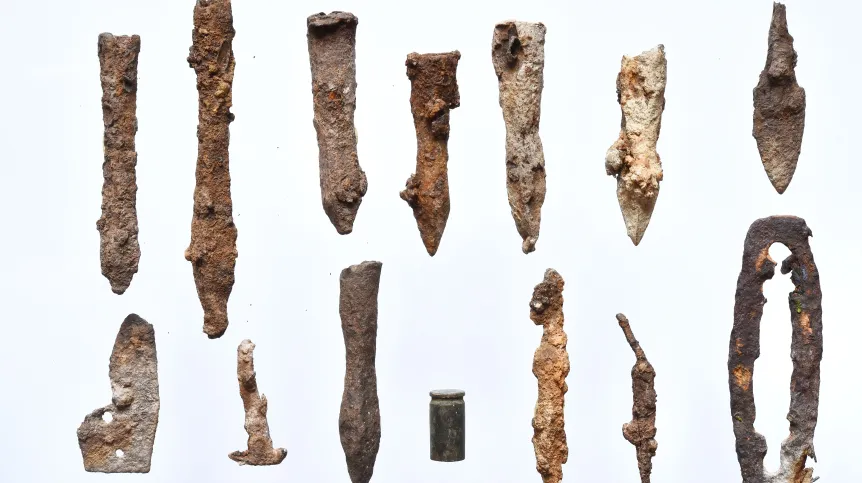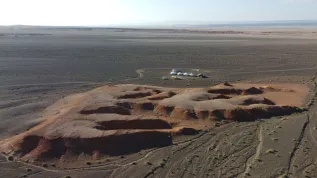
Hundreds of arrowheads and crossbow bolts thought to have come from Casimir the Great’s 1340 attack on the lands of Galicia which as a result became part of Poland have been discovered in a forest in Sanok.
Known as the 'Castle', the stronghold is located on one of the forested peaks of the Słonne Mountains - Biała Góra, part of the Sanok district of Wójtostwo.
Until recently, the place was a mystery to scientists, because the only major archaeological research in the area was carried out half a century ago.
But following a spate of illegal treasure hunts in the area, archaeologists decided to investigate.
Head of the research project, Dr. Piotr Kotowicz from the Historical Museum in Sanok said: “The results exceeded our wildest expectations. During several seasons, in and around the stronghold, we found over 200 arrowheads and crossbow bolts used.”
The objects come from the middle of the 14th century and according to Dr. Kotowicz is not a coincidence. During that period the area was taken over by the Polish king Casimir the Great, which happened as a consequence of the death of Bolesław Trojdenowicz, the last prince of Ruthenian Galicia.
He said: “It seems that the arrowheads and bolts we discovered are evidence of the fights between the Ruthenians and the Poles. The analysis of the spread of the arrowheads shows that most of them were concentrated in and near the stronghold.
“We also searched the area around it for traces of the defenders' response. But we didn't find too many projectiles. This means that the defenders were dominated by the invaders and their response to the attack was small.”
Old chronicles record that Casimir the Great’s 20,000-strong army captured several castles in 1340, and according to Kotowicz, the latest findings in Sanok can be linked to the bloody events which shortly after saw Red Ruthenia incorporated into Poland.
Preliminary analyses show that the main attack was carried out from the south. Thanks to limited excavations, the researchers also determined that the embankment protecting the defenders was heavily burned in places.
While searching for traces of the battle, archaeologists also stumbled upon numerous artefacts from the 9th-10th centuries. Among them is the first Arabic coin from the Middle Ages found in Sanok - a dirham.
Dr. Kotowicz said that these are the remains of an industrial settlement, as evidenced by numerous pieces of slag; iron ore was probably smelted there.
He said: “It is surprising because in such early periods in this area people rarely ventured to areas located so high, over 400 m above sea level.”
PAP - Science in Poland, Szymon Zdziebłowski
szz/ ekr/ kap/
tr. RL
Gallery (8 images)
-
 1/8Source: Historical Museum in Sanok
1/8Source: Historical Museum in Sanok -
 2/8Source: Historical Museum in Sanok
2/8Source: Historical Museum in Sanok -
 3/8Source: Historical Museum in Sanok
3/8Source: Historical Museum in Sanok -
 4/8Source: Historical Museum in Sanok
4/8Source: Historical Museum in Sanok -
 5/8Source: Historical Museum in Sanok
5/8Source: Historical Museum in Sanok -
 6/8Source: Historical Museum in Sanok
6/8Source: Historical Museum in Sanok -
 7/8Source: Historical Museum in Sanok
7/8Source: Historical Museum in Sanok -
 8/8Source: Historical Museum in Sanok
8/8Source: Historical Museum in Sanok













